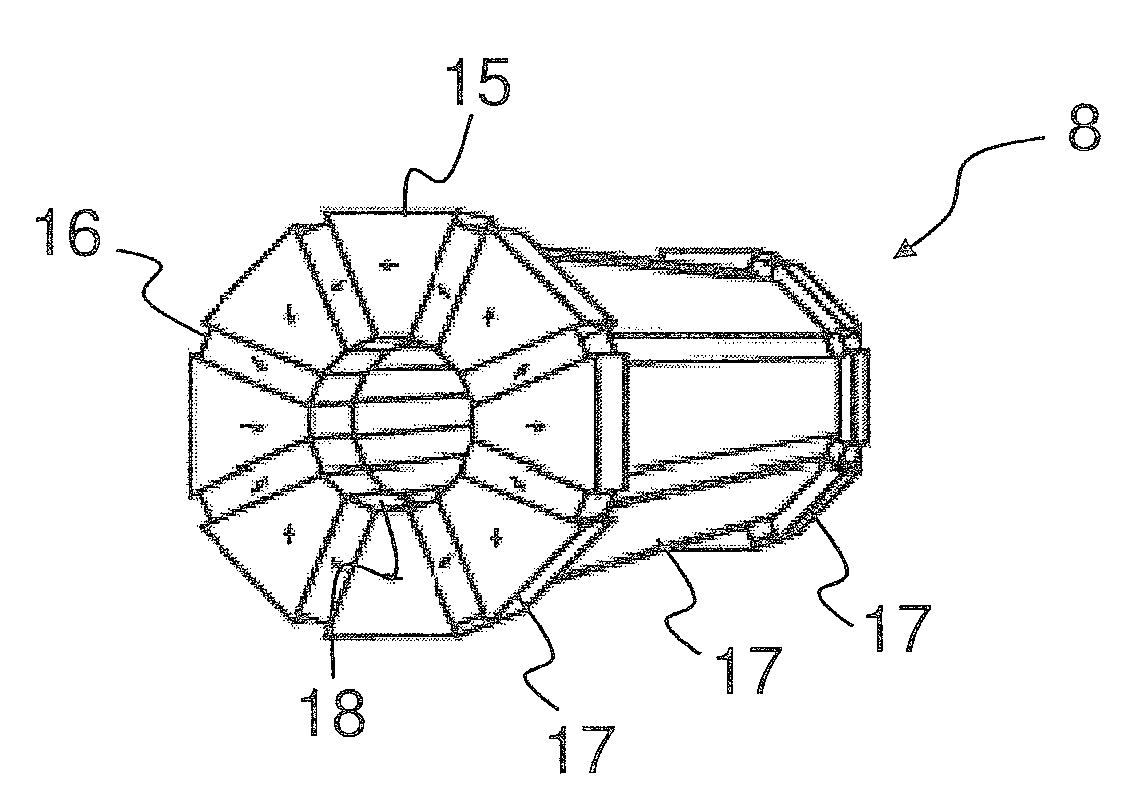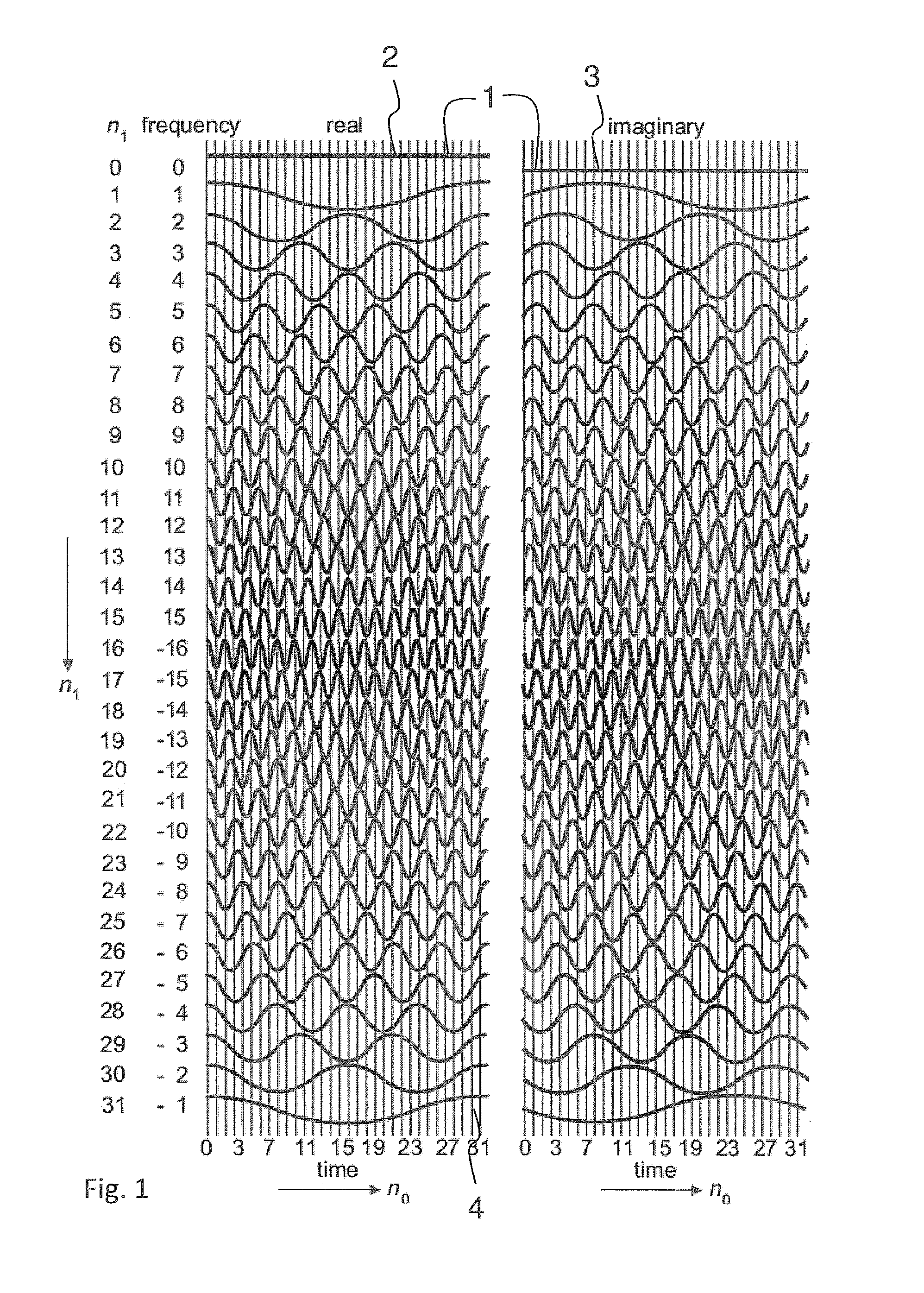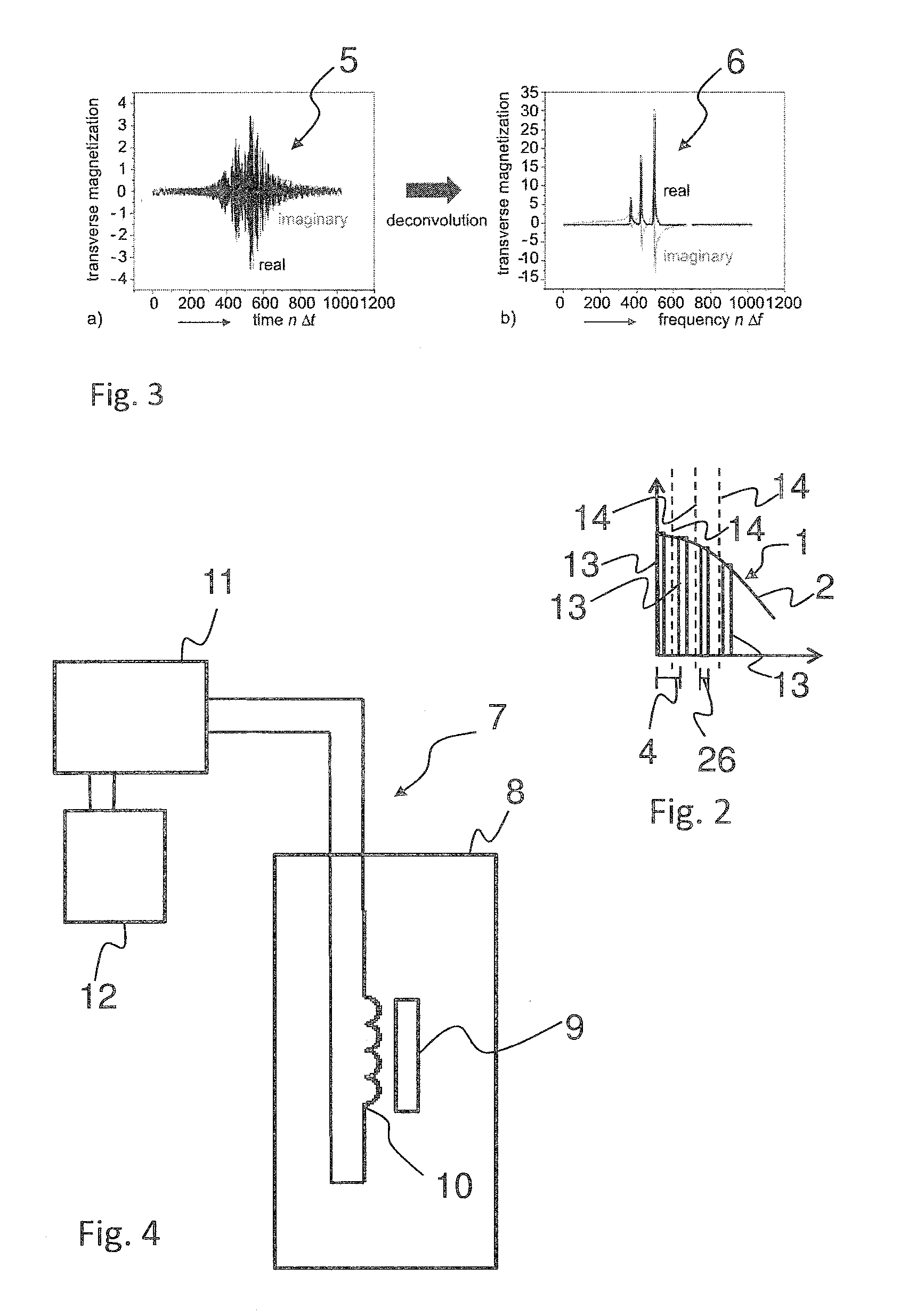Magnetic resonance method using a phase-modulated pulse train with a constant small flip angle
a phase-modulated pulse and magnetic resonance technology, applied in the field of magnetic resonance measurement, can solve the problems of low signal to noise ratio and limit excitation power, and achieve the effects of low excitation power, rapid sampling of data points, and low noise ratio
- Summary
- Abstract
- Description
- Claims
- Application Information
AI Technical Summary
Benefits of technology
Problems solved by technology
Method used
Image
Examples
Embodiment Construction
FIG. 1 depicts schematically an NMR pulse train with 1024 data points. For the sake of clarity the pulse sequence is illustrated in FIG. 1 in a two-dimensional fashion. According to the m-ary representation of n=mn1+n0 the horizontal numerals refer to n0 whereas the vertical numerals refer to n1. Both range from 0, . . . , 31, where for typesetting reasons the n0 numerals are only partly furnished.
The pulse trains 1 are shown with their respective real component 2 and the imaginary component 3 corresponding to the projections of the pulse trains 1 to the x and y directions in the rotating coordinate frame the frequency of which is defined by the so called Larmor frequency which is proportional to the static magnetic field at the sample. For sake of clarity the reference numerals are only depicted for one pulse train 1 (wavelet) with frequency n1=0 but not for the respective pulse trains 1 with n1=1 to 31 (according to equation (4) above). Therefore, both the first number of pulse tr...
PUM
 Login to View More
Login to View More Abstract
Description
Claims
Application Information
 Login to View More
Login to View More - R&D
- Intellectual Property
- Life Sciences
- Materials
- Tech Scout
- Unparalleled Data Quality
- Higher Quality Content
- 60% Fewer Hallucinations
Browse by: Latest US Patents, China's latest patents, Technical Efficacy Thesaurus, Application Domain, Technology Topic, Popular Technical Reports.
© 2025 PatSnap. All rights reserved.Legal|Privacy policy|Modern Slavery Act Transparency Statement|Sitemap|About US| Contact US: help@patsnap.com



